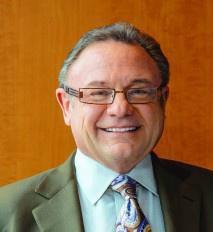
THE ECONOMIST: BACK TO THE OFFICE
Although remote work was a notable and growing segment of overall employment before the pandemic, COVID-19 dramatically ramped up the process. During the worst of the shutdowns, it was often either that or nothing (unless one was an “essential” worker). While many have since returned to offices, the way we work has fundamentally changed.
In some areas, only about half as many people are working in office buildings as prior to the pandemic. Office vacancy rates are rising in many areas, as firms downsize their square footage. In very large cities such as New York, Los Angeles, and Chicago, 20-30% of downtown space is empty. In Texas, the Dallas and Houston central business districts are also about 30% empty, with somewhat lower vacancies in San Antonio, Austin, and Fort Worth. Although certain types of space and some specific buildings are flourishing, the overall pattern has shifted.
As things evolve, however, some companies are pushing employees to return to the office, citing various reasons for wanting workers on site. Many indicate that they think collaboration will be easier and synergies greater. Others feel that if employees are remote, they’re less productive. Hundreds of thousands of individuals have recently been faced with mandates to return to the office to at least some degree.
Research generally indicates that remote employees are actually at least as productive, which may be due in part to a tendency to work more hours from home. While there are quality tools to facilitate collaboration, there are obvious benefits to being in person. Conversely, in some offices, open floorplans can impede concentration. Some people want more connection with coworkers and separation of work and home. By contrast, there are others who object to commutes or challenges associated with family responsibilities. The bottom line is that the countless variables in personality, type of work, setting, corporate culture, management style, and other factors impact the best approach.
There was a time when CEOs felt they couldn’t compel workers to do much of anything (particularly in technology fields) because jobs were so plentiful that employees could easily switch. As the economy slows, the balance is shifting to some extent (although the long-term trend will see perpetual labor shortages).
The most likely outcome for many is a hybrid situation, working in an office a few days a week. Simultaneously, many fully remote jobs have been proven effective and will remain with us. Some office areas will likely be converted to urban living spaces, and the square footage per employee will typically increase (reversing a long-term trend). Additional amenities in the workplace will similarly become more commonplace. In essence, we’ll see an ongoing adjustment, with efficiency being a driving market force. Stay safe!
Dr. M. Ray Perryman is President and Chief Executive Officer of The Perryman Group (www.perrymangroup. com), which has served the needs of over 3,000 clients over the past four decades.











